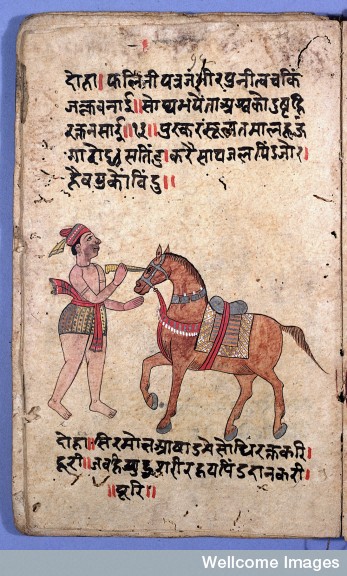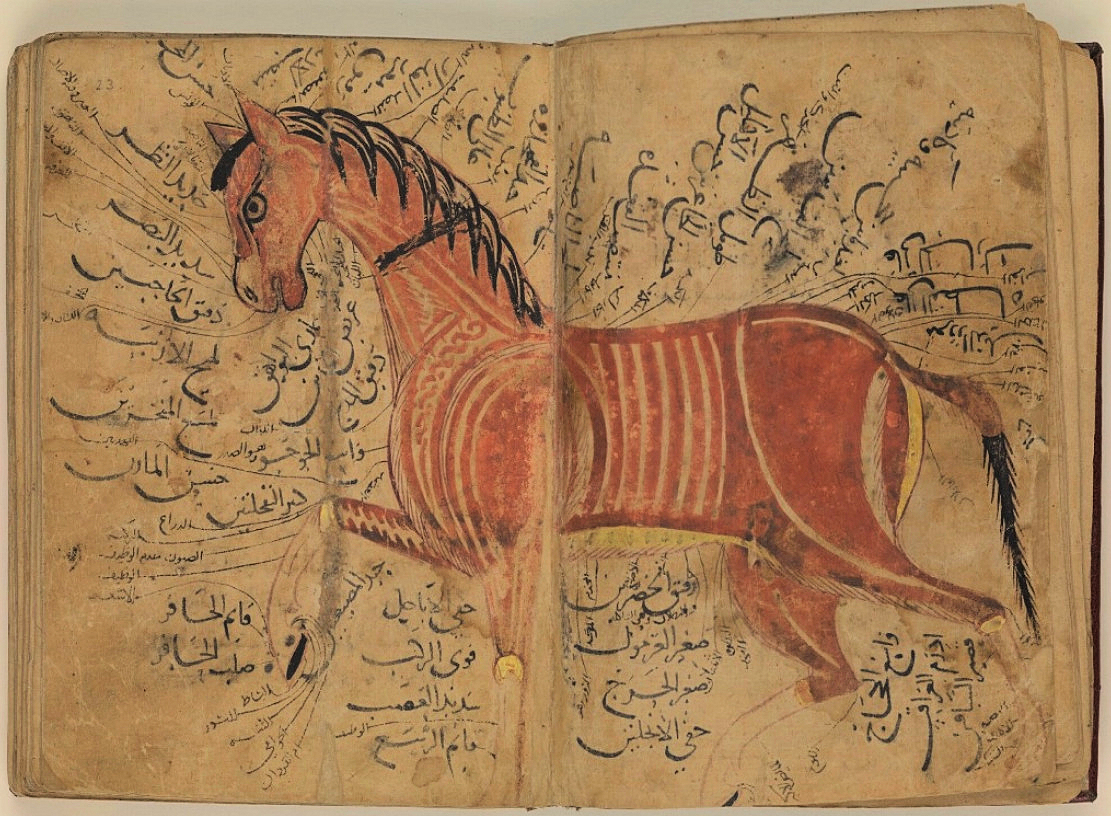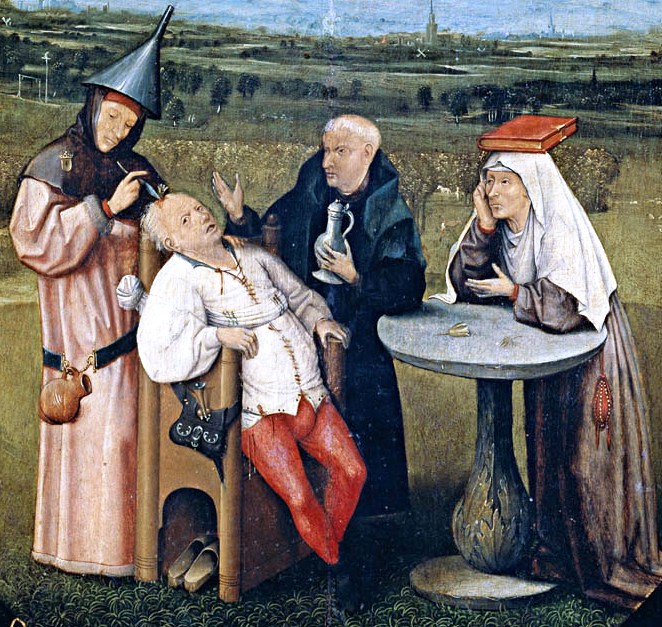|
Veterinary
Veterinary medicine is the branch of medicine that deals with the prevention, management, diagnosis, and treatment of disease, disorder, and injury in animals. Along with this, it deals with animal rearing, husbandry, breeding, research on nutrition, and product development. The scope of veterinary medicine is wide, covering all animal species, both domesticated and wild, with a wide range of conditions that can affect different species. Veterinary medicine is widely practiced, both with and without professional supervision. Professional care is most often led by a veterinary physician (also known as a veterinarian, veterinary surgeon, or "vet"), but also by paraveterinary workers, such as veterinary nurses or technicians. This can be augmented by other paraprofessionals with specific specialties, such as animal physiotherapy or dentistry, and species-relevant roles such as farriers. Veterinary science helps human health through the monitoring and control of zoonotic disease ( ... [...More Info...] [...Related Items...] OR: [Wikipedia] [Google] [Baidu] |
Paraveterinary Worker
Paraveterinary worker is the professional of veterinary science that performs procedures autonomously or semi autonomously, as part of a veterinary assistance system. The job role varies throughout the world, and common titles include veterinary nurse, veterinary technician and veterinary assistant, and variants with the prefix of 'animal health'. The scope of practice varies between countries, with some countries allowing suitably qualified paraveterinary workers a scope of autonomous practice, including minor surgery, whilst others restrict their workers as assistants to other professionals. Nomenclature Veterinary technician / nurse In North America, paraveterinary workers who have completed a course of study, passed an examination, and have a defined scope of practice are called veterinary technicians. Veterinary technicians hold a technician degree in Veterinary Technology. Most Canadian provinces have a formal registration process and, legally, veterinarians must hire re ... [...More Info...] [...Related Items...] OR: [Wikipedia] [Google] [Baidu] |
Veterinarian
A veterinarian (vet), also known as a veterinary surgeon or veterinary physician, is a medical professional who practices veterinary medicine. They manage a wide range of health conditions and injuries in non-human animals. Along with this, vets also play a role in animal reproduction, animal health management, conservation, husbandry and breeding and preventive medicine like animal nutrition, vaccination and parasitic control as well as biosecurity and zoonotic disease surveillance and prevention. Description In many countries, the local nomenclature for a veterinarian is a regulated and protected term, meaning that members of the public without the prerequisite qualifications and/or licensure are not able to use the title. This title is selective in order to produce the most knowledgeable veterinarians that pass these qualifications. In many cases, the activities that may be undertaken by a veterinarian (such as treatment of illness or surgery in animals) are restricted only ... [...More Info...] [...Related Items...] OR: [Wikipedia] [Google] [Baidu] |
Veterinary Outreach Hawaye Kebele Ethiopia
Veterinary medicine is the branch of medicine that deals with the prevention, management, diagnosis, and treatment of disease, disorder, and injury in animals. Along with this, it deals with animal rearing, husbandry, breeding, research on nutrition, and product development. The scope of veterinary medicine is wide, covering all animal species, both domesticated and wild, with a wide range of conditions that can affect different species. Veterinary medicine is widely practiced, both with and without professional supervision. Professional care is most often led by a veterinary physician (also known as a veterinarian, veterinary surgeon, or "vet"), but also by paraveterinary workers, such as veterinary nurses or technicians. This can be augmented by other paraprofessionals with specific specialties, such as animal physiotherapy or dentistry, and species-relevant roles such as farriers. Veterinary science helps human health through the monitoring and control of zoonotic disease ... [...More Info...] [...Related Items...] OR: [Wikipedia] [Google] [Baidu] |
Bourgelat
Claude Bourgelat (27 March 1712 – 3 January 1779) was a French veterinary surgeon. He was a founder of scientifically informed veterinary medicine, and he created one of the earliest schools for training professional veterinarians. Life and career Bourgelat was born at Lyon. He initially studied law and worked as a barrister, but he became interested in veterinary medicine because of his interest in horses. In 1740, at the age of 28, Bourgelat became the head of the Lyon Academy of Horsemanship. As an amateur horsemanship enthusiast, he developed a style of horse riding that is still used as of today. In 1750 Bourgelat wrote a book on the topic of veterinary medicine, in which he considered the idea of founding a veterinary school. He followed through on the idea in 1761 (also variously given as 1762 or 1764), when he co-founded the veterinary colleges at Lyon. He founded the veterinary college specifically to combat the cattle plague (also called the ''rinderpest''), and ... [...More Info...] [...Related Items...] OR: [Wikipedia] [Google] [Baidu] |
Shalihotra Samhita
The ''Shalihotra Samhita'' is an early Indian treatise on veterinary medicine (hippiatrics), likely composed in the 3rd century BCE. It is attributed to one Shalihotra son of Hayagosha, considered the founder of veterinary sciences in Indian tradition. He is said to have lived in Sravasti (modern Sahet-Mahet on the borders of Gonda and Bahraich districts in Uttar Pradesh). Text Shalihotra's principal work was a large treatise on the care and management of horses, the ''Shalihotra Samhita'' (encyclopedia of the physician Shalihotra) having some 12,000 ''shlokas'' in Sanskrit. It has been translated into Persian, Arabic, Tibetan and English languages. This work described equine and elephant anatomy, physiology, surgery and diseases with their curative and preventive measures. It elaborated on the body structures of different races of horses, and identified the structural details by which one can determine the age of a horse. Two other works, namely ''Asva-prashnsa'' and '' ... [...More Info...] [...Related Items...] OR: [Wikipedia] [Google] [Baidu] |
Furusiyya
' (; also transliterated as ) is the historical Arabic term for equestrian martial exercise. ''Furūsiyya'' “Knighthood” is a martial tradition dating back to Pre-Islamic Arabia Its main branches concerned horsemanship (including aspects of both hippology and equestrianism), horse archery and use of the lance, with the addition of swordsmanship as fourth branch in the 14th century. The term is a derivation of () "horse", and in Modern Standard Arabic means "equestrianism" in general. The term for "horseman" or "cavalier" ("knight") is ,Daniel Coetzee, Lee W. Eysturlid, ''Philosophers of War: The Evolution of History's Greatest Military Thinkers'' (2013)p. 59 60, 63. "Ibn Akhī Hizām" ("the son of the brother of Hizam", viz. a nephew of Hizam Ibn Ghalib, Abbasid commander in Khurasan, fl. 840). which is also the origin of the Spanish rank of '' alférez''.The Perso-Arabic term for "''Furūsiyya'' literature" is or . is also described as a small encyclopedia about horse ... [...More Info...] [...Related Items...] OR: [Wikipedia] [Google] [Baidu] |
Hippiatrica
The ''Hippiatrica'' ( Greek: Ἱππιατρικά) is a Byzantine compilation of ancient Greek texts, mainly excerpts, dedicated to the care and healing of the horse.. The texts were probably compiled in the fifth or sixth century AD by an unknown editor. Currently, the compilation is preserved in five recensions in 22 manuscripts (containing 25 copies) ranging in date from the 10th to the 16th centuries AD. Contents Seven texts from Late Antiquity constitute the main sources of the ''Hippiatrica'': the veterinary manuals of Apsyrtus, Eumelus (a veterinary practitioner in Thebes, Greece) Hierocles, Hippocrates, and Theomnestus, as well as the work of Pelagonius (originally a Latin text translated into Greek), and the chapter on horses from the agricultural compilation of Anatolius.. Although the aforementioned authors allude to their classical Greek veterinary predecessors (i.e. Xenophon and Simon of Athens), the roots of their tradition mainly lie in Hellenistic agricultural ... [...More Info...] [...Related Items...] OR: [Wikipedia] [Google] [Baidu] |
Epidemiology
Epidemiology is the study and analysis of the distribution (who, when, and where), patterns and determinants of health and disease conditions in a defined population. It is a cornerstone of public health, and shapes policy decisions and evidence-based practice by identifying risk factors for disease and targets for preventive healthcare. Epidemiologists help with study design, collection, and statistical analysis of data, amend interpretation and dissemination of results (including peer review and occasional systematic review). Epidemiology has helped develop methodology used in clinical research, public health studies, and, to a lesser extent, basic research in the biological sciences. Major areas of epidemiological study include disease causation, transmission, outbreak investigation, disease surveillance, environmental epidemiology, forensic epidemiology, occupational epidemiology, screening, biomonitoring, and comparisons of treatment effects such as in clinical t ... [...More Info...] [...Related Items...] OR: [Wikipedia] [Google] [Baidu] |
Trepanation
Trepanning, also known as trepanation, trephination, trephining or making a burr hole (the verb ''trepan'' derives from Old French from Medieval Latin from Greek , literally "borer, auger"), is a surgical intervention in which a hole is drilled or scraped into the human skull. The intentional perforation of the cranium exposes the ''dura mater'' to treat health problems related to intracranial diseases or release pressured blood buildup from an injury. It may also refer to any "burr" hole created through other body surfaces, including nail beds. A trephine is an instrument used for cutting out a round piece of skull bone to relieve pressure beneath a surface. In ancient times, holes were drilled into a person who was behaving in what was considered an abnormal way to let out what people believed were evil spirits. Evidence of trepanation has been found in prehistoric human remains from Neolithic times onward. The bone that was trepanned was kept by the prehistoric people an ... [...More Info...] [...Related Items...] OR: [Wikipedia] [Google] [Baidu] |
Zoonosis
A zoonosis (; plural zoonoses) or zoonotic disease is an infectious disease of humans caused by a pathogen (an infectious agent, such as a bacterium, virus, parasite or prion) that has jumped from a non-human (usually a vertebrate) to a human. Typically, the first infected human transmits the infectious agent to at least one other human, who, in turn, infects others. Major modern diseases such as Ebola virus disease and salmonellosis are zoonoses. HIV was a zoonotic disease transmitted to humans in the early part of the 20th century, though it has now evolved into a separate human-only disease. Most strains of influenza that infect humans are human diseases, although many strains of bird flu and swine flu are zoonoses; these viruses occasionally recombine with human strains of the flu and can cause pandemics such as the 1918 Spanish flu or the 2009 swine flu. '' Taenia solium'' infection is one of the neglected tropical diseases with public health and veterinary concern i ... [...More Info...] [...Related Items...] OR: [Wikipedia] [Google] [Baidu] |
Medicine
Medicine is the science and practice of caring for a patient, managing the diagnosis, prognosis, prevention, treatment, palliation of their injury or disease, and promoting their health. Medicine encompasses a variety of health care practices evolved to maintain and restore health by the prevention and treatment of illness. Contemporary medicine applies biomedical sciences, biomedical research, genetics, and medical technology to diagnose, treat, and prevent injury and disease, typically through pharmaceuticals or surgery, but also through therapies as diverse as psychotherapy, external splints and traction, medical devices, biologics, and ionizing radiation, amongst others. Medicine has been practiced since prehistoric times, and for most of this time it was an art (an area of skill and knowledge), frequently having connections to the religious and philosophical beliefs of local culture. For example, a medicine man would apply herbs and say prayers fo ... [...More Info...] [...Related Items...] OR: [Wikipedia] [Google] [Baidu] |
Ashoka
Ashoka (, ; also ''Asoka''; 304 – 232 BCE), popularly known as Ashoka the Great, was the third emperor of the Maurya Empire of Indian subcontinent during to 232 BCE. His empire covered a large part of the Indian subcontinent, stretching from present-day Afghanistan in the west to present-day Bangladesh in the east, with its capital at Pataliputra. A patron of Buddhism, he is credited with playing an important role in the spread of Buddhism across ancient Asia. Much of the information about Ashoka comes from his Brahmi edicts, which are among the earliest long inscriptions of ancient India, and the Buddhist legends written centuries after his death. Ashoka was son of Bindusara, and a grandson of the dynasty's founder Chandragupta. During his father's reign, he served as the governor of Ujjain in central India. According to some Buddhist legends, he also suppressed a revolt in Takshashila as a prince, and after his father's death, killed his brothers to ascend ... [...More Info...] [...Related Items...] OR: [Wikipedia] [Google] [Baidu] |












